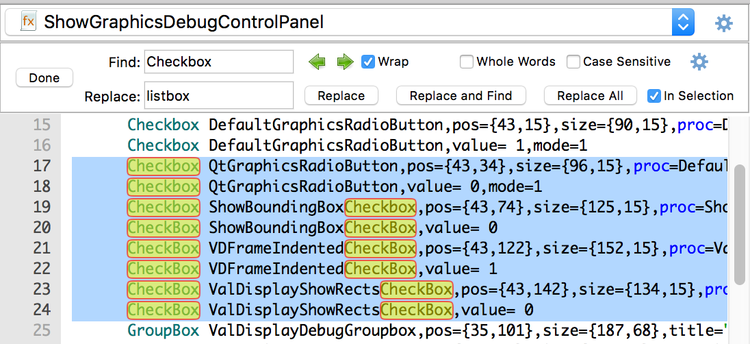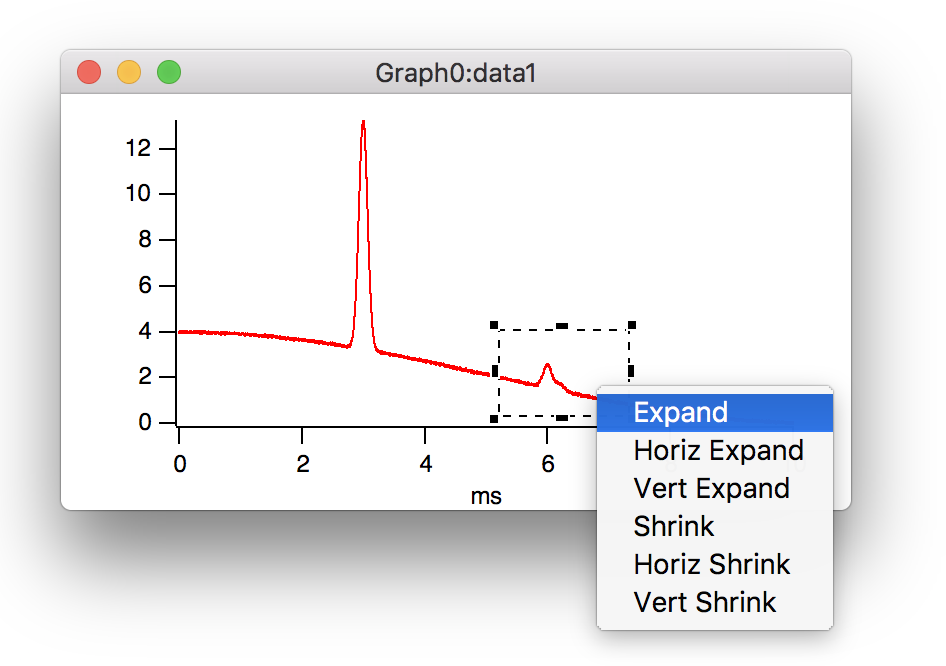
legend produces the default legend in the top graph.You can make selections to any axis (or multiple axes at the same time) from the pulldown menu at the upper left of the window.Double-click on an axis (look for vertical or horizontal double-arrow cursor).Waves are drawn in the plot starting with the first trace (this will be furthest back visually) and ending with the last trace (on top).Drag and drop waves to change the order.This way you can make all the versions from the same graph. This can be useful if you want to show a graph in a presentation where you show versions with more traces in each view.If the hidden trace had the highest or lowest value and controlled the axis range, the axis range will be reset unless "Autoscale" is checked."Hide Trace" makes the selected trace not visible, but does not remove the associated axis."Set as f(z)." lets you set color, marker type, and marker size by any other wave of appropriate length (e.g., color by time, make marker size proportional to value)."Offset" lets you do additive offsets (x and or y) and multiplicative scaling (x and or y).You can change several traces at once by selecting multiple waves (ctrl+click).

Right-click on a graph and choose "Modify (tracename).".From the Data Browser, single-click on a wave then right-click and choose "Display" (can't choose a "vs" wave).Data -> Load Waves -> ' and choose to load an appropriate file typeįrom Excel Files Graphs Helpful Graph Functions.Data -> Load Waves -> Load Igor Text.' and choose the appropriate file.Waves will be loaded into the current DataFolder Double-click on the file icon on your computer.You can make a wave of a line with slope 3 and intercept 4 by You can treat a wave as a variable name in equations and assignments are made on a point-to-point (point 0, 1, etc.) basis. Note that if you paste into the table, you might insert points instead of overwriting existing data.Note that Igor can only undo 1 action (it doesn't remember more than 1 action).Note that you are editing the only copy of the wave.Now you can type values directly into the table.Make a new table (from the pulldown menus, choose Window -> New Table and don't choose any existing waves).from the pulldown menus, choose Window -> New Table and select the wave(s) from the dialog window.single-click on it in the Data Browser, then right click and select "Edit".double-click on it in the Data Browser to view it in a table.First you need to view the wave in a table./I: num1 is start value, num2 is last value.


CTRL + C, CTRL + X, CTRL + V -> copy, cut, paste.-> in a graph: autoscale axes Graph -> Autoscale Axes.CTRL + A -> in a table or in the command window: select all.



 0 kommentar(er)
0 kommentar(er)
